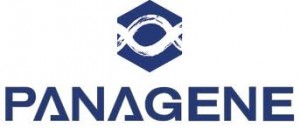Panagene is a biotech company using its proprietary Bts PNA monomers and proprietary oligomerization process to produce highly effective tools.
Panagene – PNA technologies
PNA (Peptide Nucleic Acid) is an artificially created DNA analogue created in 1991, where the phosphate ribose ring of DNA is replaced with the polyamide backbone of N-(2-aminoethyl)glycine. Despite a radical structural change, PNA strongly binds to its complementary DNA or RNA sequence by Watson-Crick base pairing. Thanks to this superior binding affinity and biological stability, PNA is widely used as tools of molecular biology and functional genomics research (Northern and Southern blot, enhanced PCR amplification, PCR clamping, artificial restriction enzyme systems, PNA-assisted rare cleavage, DNA purification, etc…). Furthermore, this strong binding properties imply that PNA can be used as bio-drugs for antigene and antisense therapy (a very small quantity of PNA being effective in therapeutic applications) or as miRNA inhibitors (PNA binding stronger its complementary RNA than DNA).
Panagene has developed its proprietary Bts PNA monomers (Bts ; benzothiazole-2-sulfonyl group) and proprietary oligomerization process. The PNA oligomerization using Bts PNA monomers is composed of repetitive cycles of deprotection, coupling and capping, leading to a more effective and convenient oligomerization. Panagene’s PNA synthesis does not require pre-activation of monomers prior to the coupling reaction or anhydrous conditions. This process doesn’t employ coupling reagents, and the excess monomers used in coupling reaction can be easily recovered and re-used.
Panagene develops PANArray, a new type of microarrays, overcoming serious background noise problems obtained with classical DNA-based microarrays. For instance, PANArray HPV is a PNA-based microarray for genotyping of HPV (human papilloma virus) more sensitive and specific than DNA microarray.
Panagene also proposes PNAClamp Technology, a PNA-based PCR clamping that can selectively detect the mutated DNA sequences from the mixture with the wild type DNA sequences. In combination with real-time PCR technology, PNAClamp can be easily used to detect mutated DNA sequences by measuring amplicons after amplification. Furthermore, PANA qPCR technology uses a sequence-specific PNA probe with a fluorescent reporter and quencher. Unlike TaqMan assays, PNA probe is not hydrolyzed during amplification because its resistant to enzyme degradation. PANA qPCR is thus a powerful tool for multiplexing, allelic discrimination experiments and quantitative analysis with high specificity and sensitivity.
Panagene is a biotech company based in Daejeon (Korea) with lots of distributors worldwide. Panagene is now developing a new technology mixing PNAClamp and PANA S-Melting, called PANA C-Melting. PANA C-Melting is able to detect small amount of mutation with high sensitivity, but also to genotype multiple mutations simultaneously using the phenomena that has their own melting temperature(Tm) value for the sequence changes of the target gene. PANA C-Melting allows the detection of circulating tumor DNA (ctDNA) only with minute amount of blood sample. This product represents a breakthrough in molecular diagnosis, since it’s convenient to genotype mutation genes in ctDNA in less than 3 hours.
More about Panagene : www.panagene.com
Panagene – PNA qPCR – Bts PNA monomers – Peptide Nucleic Acid – PNA – Bts PNA – PANArray – PNAClamp – PANArray HPV – PANA S-Melting – PANA C-Melting – circulating tumor DNA – ctDNA
Panagene – PNA oligomerization – PANAMutyper R EGFR – miRNA inhibitor – benzothiazole-2-sulfonyl group – PANA qPCR

